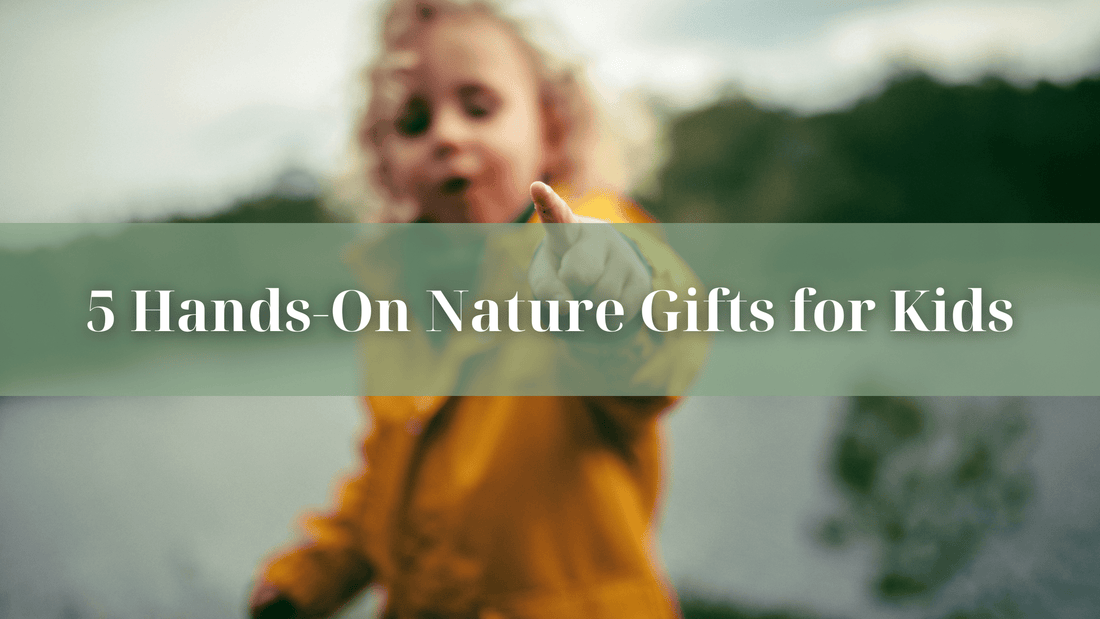
5 Hands-On Nature Gifts for Kids
Hanna LeachWhether it’s for Christmas, a birthday, or another special gift-giving occasion, there are plenty of presents out there that encourage kids to appreciate nature and foster a connection with the outdoors. We learn to empathise with the natural world around us from a young age, and it’s so important to show children the wonders that can be found in nature. Here are five different gifts that are perfect for just this:
- Bumblebee Hotels
All the rage right now, bumblebee hotels provide a little aesthetic area for native bees to slumber during the winter. With so many yards cleared of autumn leaves and other dead foliage, native bees don’t have anywhere to hunker down! These little “hotels” allow them a nice place to stay and give landowners a cute garden decoration.
If you can resist the rake, it is better to leave the leaves in your yard after they’ve fallen and allow the dead branches scattering your garden to stay put. This gives many insects that are vital to the ecosystem a place to hibernate, and provides birds with food during colder months.
Either way, this gift is a cute one to teach children about our fuzzy little buzzing friends, how they help our ecosystem, and what we can do to help them back!
- Wildflower Mini Garden
Though this gift would have to wait until spring to be used, it’s a beautiful option to introduce kids to sustainable gardening. The best thing is, this is a gift that would be appreciated by all age groups. Anyone from a youngster to a young adult who might not have their own garden could benefit from it.
A shelf-top garden, full of native flowers, that can be placed in a window or on a patio is a wonderfully quaint way to reconnect with the nature around you and teach kids to foster it’s growth. Not to mention which it’s especially therapeutic in a nation of lawns and pesticides.
Check out native wildflowers in your region here, and some cute windowsill pot options.
- Mushroom Grow Kit
Did you know this was a thing? You can buy this kid-friendly gift many places, including Grow Cycle on Etsy! It’s an easy way to teach kids about the importance of fungus in our ecosystem, and that some (but not all) mushrooms are edible.
Fungi help things like tree trunks and old leaves decompose and turn back into richer, healthier dirt. Showing kids how this organism grows allows them to understand another area of nature. If you’re interested in mushroom identification, look on your state website for help or check out some educational influencers like @theblackforager!
- Terrarium Building Kit (with bugs)
Teaching about ecosystems is also possible through closed terrariums. It’s like having a little world in a jar - one that reflects the bigger world outdoors. It encourages children and adults alike to remember the intricate systems found in nature as the water in the jar goes through its own version of the water cycle and the plants grow.
There are many different starter kits you can buy, and guides as to what creatures could be added, like roly polys, to make the terrarium bioactive (read more about isopod care here). If you decide to forego the bugs, you can still assemble the kit yourself and add personal touches that your kids might like, such as legos.
This can also be easily done at home with a spare jar and some moss from your yard, along with some soil, gravel, and charcoal.
- Beginner's Binoculars/Bird Book
Birdwatching can become quite a fun task for little ones if you engage them in the task. I see it as a game of finding the “fairy,” or the little bits of magic in the world that are birds. If you make it a game to listen and find the birds in the park, it’s a great opportunity to learn about what animals are living near, and let that curiosity roam.
Provide a little journal, binoculars, and an identification book for the birds in your area (easily found in a secondhand bookstore or the local library). Use the app Merlin Bird ID to identify the birdsong! This could become a fun hobby for parents on local walks, too, or an excuse to set up a bird feeder.
It’s never too early to foster a passion for birdwatching, or any collection for that matter. This point could apply to most anything like fossils, rocks, plants, etc. Provide a book to help with identification, maybe a mini-microscope, and let them figure out the rest!
In Conclusion
We here at Refillism hope this inspires some happy gift-giving endeavours, as children quite literally are the future. It’s our duty to help this up and coming generation to connect with nature.
As an end note, all of these gifts would also be great for a classroom activity for youngsters in the new year! It’s definitely worth contacting any teachers you might know to see if they’d like a kit for their class.
References:
V, Charlotte. Where Do Bees Go in Winter? Woodland Trust. https://www.woodlandtrust.org.uk/blog/2022/11/where-do-bees-go-in-winter/
M, Andy. To Help Birds This Winter, Go Easy on Fall Yard Work. Audubon. https://www.audubon.org/magazine/help-birds-winter-go-easy-fall-yard-work
T, Tamsin. How to make a terrarium. BBC Gardeners' World Magazine. https://www.gardenersworld.com/how-to/grow-plants/how-to-make-a-terrarium/
The 5 Best Bugs to Add to Your Sealed Terrarium. Terrarium Kit. https://terrariumkit.ca/blogs/news/the-5-best-bugs-to-add-to-your-sealed-terrarium?srsltid=AfmBOopVd7BUEFO6rELUOJoiFkE16_sm9ZI5ZDrIxCANhuv0wPd7orZJ
Isopod Care: How to care for woodlice. Evolution Reptiles. https://www.evolutionreptiles.co.uk/care-hub/care-sheets/isopod-care/
Isopods Clean-up Crew for Bioactive Terrarium Vivarium. Highland Moss. https://highlandmoss.com/shop-2/terrariums-mossariums/maintenance-crew/isopods-clean-up-crew-for-bio-active-terrarium-vivarium-copy/
Home: Merlin Bird ID. Cornell Lab of Ornithology. https://merlin.allaboutbirds.org/
